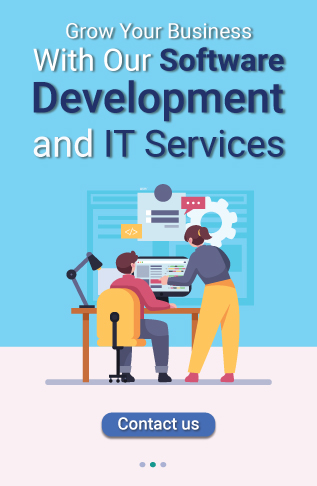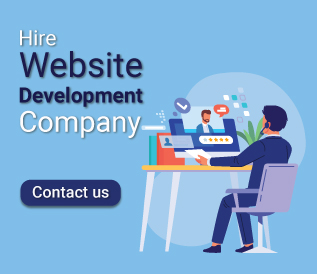The journey of the healthcare industry is revolutionary, especially after COVID-19, whenever the healthcare industry goes completely digital and opens a new way for healthcare organizations to deliver their medical services digitally.
This becomes the most convenient option for both patients and doctors to consult virtually, diagnose patients, and provide the best prescriptions without any in-person meetings. Even after COVID, most people consider digital healthcare a more comfortable and convenient option than in-person meetings.
The demand for remote healthcare services is rapidly growing, and patients are now looking for more convenient ways to get treatment. So, there’s no option left for healthcare organizations to adapt to this latest change and deliver their service via software.
Now, almost every healthcare business is building software to deliver its medical services.
So, if you’re also planning to build healthcare software for your business, then this guide is all you need.
Here, we will deep dive into the software development process, its types, benefits, and a step-by-step process to build healthcare software for your business.
Table of Contents
ToggleTypes of Software in the Healthcare Industry
There are different types of healthcare software built for patients and healthcare professionals. Here are some of the most common types:
1. Patient Monitoring Software
One of the best healthcare software that is used by doctors and healthcare professionals is patient monitoring software. These patient monitoring software are AI-powered, which regularly see the patient’s health conditions and give up-to-date reports. So that healthcare professionals can easily check the updated patient records and make better decisions.
2. E-Prescription Software
There is e-prescription software available that allows healthcare professionals to easily generate prescriptions for patients and share them with pharmacies digitally without wasting paperwork. It improves the operations and makes the prescription process more accurate.
3. Appointment Scheduling Application
There are appointment booking and scheduling apps available that allow patients to easily book appointments with healthcare professionals at their convenience without going for in-person meetings. This helps patients save their precious time and avoid traveling or waiting in queue for booking or consultation. They can simply book via the app at a time that is convenient for them and get the consultant at their home virtually.
4. Hospital Management System
With the help of a hospital management system, all the operations of the hospitals, including billing, payments, claims management, data management, administration, etc, can be streamlined. This makes the operations more efficient in hospitals and improves patient care.
5. Medication Reminder Software
Medication reminder software helps patients keep their medicines on time to ensure better patient care. Plus, the medical device software development helps users get updates on all the upcoming consultations or follow-up meetings with the healthcare professional about the health progress.
Benefits for Clinical Specialists
- Elimination of daily routine paperwork
- Simple activities management through the use of electronic health records
- Seamless management of all processes in hospitals
- Enhanced collaboration with colleagues due to telemedicine even despite the geographical distance
Benefits for Patients
- The ability to make appointments and fill out documents remotely
- Easy communication with personal physicians via secure online channels
- Use of digital personal health records to access laboratory results and medical history
- The additional educational information provided by experts on different issues
Benefits for Health Organizations
- Better coordination of processes because all the information is stored in one place
- Enhanced diagnostics to accurate and detailed patient information and quick access to records
- Availability of communication tools
- Reduced costs due to the automation of numerous tasks
- Enhanced quality of medical services
- Increased patient satisfaction and engagement
These considerable benefits prove that every medical company, large or small, should make healthcare software to succeed in a highly competitive market.
How to Develop Custom Healthcare Software?
Here are the step-by-step guidelines for opting for the right custom healthcare software development solution for your organization.
Step 1: Identify your target audience
Take a step back before you build custom healthcare software, and understand who the typical end user is and why they need it.
A deep analysis and understanding of your target audience, as well as their desires, preferences, and requirements, will help you craft a solution that solves their exact challenges and meets their needs. Knowing your target audience inside and outside makes it easier to identify the important features, technologies and components that can be incorporated into a software solution.
Step 2: Plan the software architecture
Once you have figured out the target audience, start designing the software’s functional structure or architecture. This design stage is based on the tasks, functionalities and data to be used by the software. In a nutshell, plan and define the functions of the software from the perspective of the user’s needs.
Visualization is a crucial component of this step. Visualize the structure of the software once you have defined what functions it will perform. Then determine which modules and sub-modules to include in the structure and how to perfectly integrate them.
Step 3: Focus on UI/UX
Healthcare apps, like all consumer-focused applications, must be intuitive, easy to use and deliver meaningful end-user experiences. To achieve this, software developers must work together with designers to create a UX and build a UI designed to meet end-user needs and expectations.
Step 4: Ensure the software is secure
With growing numbers of cyber-security issues and data, software engineers must ensure the security of the application and its data from the beginning of the design.
Understand and analyze security criteria such as encryption methods that are meant to provide data protection at a high degree. This is a critical move, especially if the purpose is to obtain FDA clearance for the software solution.
Step 5: Be prepared to integrate with other systems
The new software framework does not disrupt workflow at any organization’s level. During this stage, integrate existing IT infrastructure and software systems, ensuring that services, data, and processes are intact and seamlessly migrated to the new system.
Ideally, the entire migration process should be carried out so that patients, healthcare providers and other users have no downtime or delays. That’s why the planning stage of the integration process should be meticulous.
Step 6. Create a Minimum Viable Product (MVP)
First, you can ask a development firm to build an MVP to understand whether your vision matches reality. Plus, it allows you to give more accurate suggestions that can be implemented during the final project development. Once you’re satisfied with the MVP, you can switch to the main project development and ensure it covers all the requirements and latest suggestions to come up with the desired results.
Step 7. Test and Launch
It’s time to do religious testing on your final product and make sure all the features are working properly and that its UI seems user-friendly. You should analyze the customer’s experience and whether it meets with the end results or not. You need to test all the operations possible in the software before launching it in the market. If there are any issues in some functionalities, then they can be fixed immediately. Once the testing is done, then, you can launch the software in the market and let the real users experience the software.
Step 8. Update and Maintain
Now, it’s time to identify how your potential users are using the software, what their feedback is after using the software, and where they’re having any issues that can be improved. So, you need to keep your software updated and ensure there are no issues arising when it’s live. Plus, you need to understand that an app requires continuous maintenance, which you need to provide. So, it’s better to hire a development firm that offers continuous support and maintenance after the development.
Planning to hire perfect software development team?
DreamSoft4u ultiamte solution for all type of software development
Conclusion
The Healthcare industry is rapidly changing, and staying up-to-date with them is essential for businesses while building software, especially with the latest technologies. We hope this guide helps you understand everything about healthcare software development, its types, benefits, and step-by-step process. Now, it’s your turn to find a software development company and let the professional build your healthcare software under your budget.
FAQs
Q.1 How to build software for healthcare?
To build healthcare software, you can hire a software development consulting company that can handle end-to-end development of your healthcare software under your budget.
Q.2 How much does healthcare software cost?
The average cost to build healthcare software ranges between $100,000 to $500,000. However, there are various factors that can affect the cost of development, including software complexity, design, add-on functionalities, etc.
Q.3 Can AI replace doctors?
No, AI is not able to replace human doctors; it just makes most back-end operations much easier and faster. So that patients can quickly connect with the doctor and get the best treatment.
Q.4 What are the key benefits of healthcare software?
Healthcare software allows doctors and patients to connect digitally with your in-person meeting, improves efficiency and better patient care, and reduces paperwork and human errors.





















